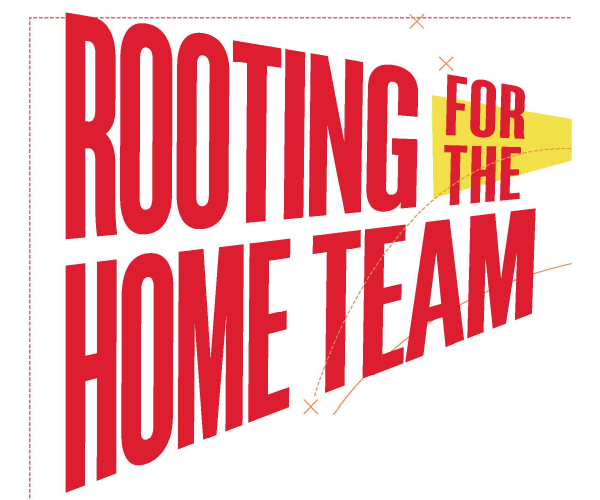
Employees, the Face of your Company
January 3, 2012
8 minute ReadWho doesn’t want a workplace where good employee relations are the norm? Where the threat of an organized labor invasion isn’t looming? The vast majority of wise employers want to create and maintain an environment where everyone can flourish, where cooperation and collaboration are the norm. This is not the impossible dream. There are strategies that managers can (and should) employ to create a smooth-functioning workplace where contention is an anomaly, not the norm. This article details five practical techniques for building and maintaining just such a work environment.
Assumptions
Before detailing the strategies, there are three underlying assumptions that must be presented. The first is that the organization in question is not hovering at the doors of the local bankruptcy court. Even the most skilled managers would find it close to impossible to create the sense of security and faith in the enterprise that is necessary when employees see it steadily losing market share. Fear, suspicion and doubt are natural when a company’s very existence is in jeopardy.
The second assumption is that the organization sincerely wants to make significant changes at the core to create a healthier environment. Creating an environment for great employee relations requires a commitment in thought, word and deed. Resources must be made available. Time and energy must be invested in building the competencies of leaders at all levels. This type of work requires more than senior leadership lip-service. It requires a long-term commitment to growing people.
The third and final assumption is that leaders seeking to build a better workplace understand that conflict is both inherent and inevitable. It is unrealistic to expect that conflict will not emerge when creating higher levels of accountability. The conflict must be carefully managed so that it does not become destructive or divisive.
The Strategies
There are five strategies that managers can implement to construct the kind of employee relations that position an enterprise as an employer of choice. This means that the company has worked diligently to become the kind of place where people actually want to invest their time, talent and energy. It means that leadership beyond the HR department places a high value on the human element. Becoming an employer choice also means that the organization has sensible systems in place for any and every thing that touches the employee. Now, moving on to the strategies…
Coach to the positive.
Coaching is a skill that anyone and everyone who manages must master. Too much emphasis is placed on corrective coaching. Managers get better, more sustainable results when they learn to coach to the positive. When you catch people doing things right and compliment them, they are sure to repeat that behavior. This applies no matter what level or position they hold. Bill Price, director of human resources for Tampa-based Opis Management Resources, aptly sums up this principle when he says, “Managers who build positive relationships with their employees have a head-start towards creating good employee relations.” His company has demonstrated expertise in this area. They manage 11 long-term care facilities in Florida. Two of the 11 have received the state’s coveted Gold Seal awards. These awards are not bought; they are earned by adhering to the highest standards of care and service. That can only happen in an environment that treats employees as well as it treats customers. Price goes on to say, “The more positive contact a manager has with an employee, the more receptive the employee is likely to be when it comes time for the manager to redirect or correct the employee.”
Create a learning organization where managerial skill-building is a priority.
We often assume that every person who manages people and resources has been adequately prepared for that role. This is an erroneous assumption. People are frequently promoted because of their technical prowess, their skill at networking or their gift of gab.
We see far too many managers who are ill-equipped for the role they now play. This can be frustrating for employees who are on the other end of their on-the-job training.
Don’t let managers practice on employees. Both deserve better. Structure a comprehensive management and leadership development approach that is consistent with your organization’s mission and values. Rather than relying on scattered approaches, a course here and a course there, utilize a well-planned strategy that will enable managers to build their skills in key competency areas. It is important that your unique approach to this type of development be just that, unique. It must be customized to the needs of your company. Few enterprises benefit from off-the-shelves courses when they are serious about honing critical leadership skills.
No leader should be exempt from learning. Each and every leader should have a clear, easy-to-follow developmental plan. This plan is not only their map for skill building, it also a sign of the organization’s commitment to their individual growth. People stay in organizations that make significant investments in them. Customized management development is a clear indicator of this level of investment.
Demonstrate respect by listening, honoring confidences and modeling integrity in all interactions.
While this might sound very basic, it is one of the most frequent complaints disgruntled employees levy against their managers. They cite the fact that their bosses don’t listen attentively when they have issues or concerns. They also frequently complain about not having their manager’s undivided attention when they have problems. In extreme cases, employees describe duplicitous managers who have an aversion to truth. More often, they describe managers who simply can’t take a stand on their behalf or who are overly involved in organizational politics. In all of these cases, managers have compromised their ability to be credible leaders because they are not demonstrating respect or integrity.
Leaders in the public and private sectors acknowledge the importance of respect in employee relations. Laurie Ford, acting associate director of the Environmental Protection Agency’s Office of Pollution Prevention and Toxics, Information Management Division, highlights the importance of listening as a way of demonstrating respect. She says that managers must not only have good listening and communication skills, but also have a keen ear for feedback if they are to build good employee relations. Ford says, “Managers must listen openly to feedback, be willing to apologize for behavior and commit to changing behavior that is creating problems.”
Bill Price adds another dimension to the importance of listening as a method of showing respect. He says that a wise manager listens with a desire to understand the employee’s message. This manager does not listen to defend or rebut, rather to build a strong bridge of understanding the ultimately benefits the enterprise. When employees feel that they are heard, understood and respected, they are less likely to seek third parties to resolve their grievances. They know that they are working within an organization that demonstrates respect in tangible, important ways.
Pay equitable wages consistent with market standards.
Money is not the only source of employee satisfaction, but it certainly has tremendous impact. Conduct a market analysis to ensure that all staff, regardless of their position, are being paid competitively. If they are not, establish a plan for bringing wages up to market standards. Communicate the results of your analysis to employees. This signals management awareness to any concerns about equitable compensation. More important, it lets employees know that not only are you listening, you are also willing to take necessary action.
In addition to assessing wages, also evaluate bonus and incentive structures. These structures should be easy for employees to understand. They should be able to effortlessly comprehend how these extras are earned. When systems are comprehensible, employees are less likely to be suspicious or to think that bonuses and incentives are out of their reach. They are also more inclined to actually invest their energy in trying to attain these rewards.
Examine and overhaul processes that touch employees.
What kinds of hoops do employees have to jump through to get their work done? If your systems, processes and practices are creating frustration for employees, you are undoubtedly creating frustration for customers and end-users. Analyzing processes and systems will enable you to maintain a high level of awareness as to how the work gets accomplished and ways to get it done more efficiently. This analysis creates the opportunity for you to build dialogue with the people closest to the work, the people who do it. Partner with employees to deconstruct processes and then rebuild them in the most efficient way possible.
It is also wise to evaluate the systems by which you deliver services to employees. There are any number of services that employees avail themselves to in the organization. Are they administered in ways that demonstrate high regard for the employees? Analyze everything from how benefits are administered, to whether the benefits packages are competitive and equitable to how well your training function is managed. Do you make it easy for them to use your services? Are the services offered appropriate for the current employee population? Don’t evaluate from your perspective; ask them if you are measuring up. If not, revamp your service delivery model so that employees become satisfied internal customers.
Conclusion
While these strategies are important, there are additional management interventions that will help you develop a more positive tenor for employee relations. Todd Holderman, Deputy Division director of the Environmental Protection Agency’s Office of Pollution Prevention and Toxics, Information Management Division, reminds us of the importance of building and maintaining trust. He says that the trust level has to be high enough for there to be open dialogue and constructive debate. Employees who feel that they are heard typically know that their input is respected. This enables them to engage in the work of the enterprise at a higher level.
Trust is of vital importance, as is the ability to consistently demonstrate firmness and fairness. Managers are tasked with evoking the best from their team members. This requires that they not only articulate high standards, but they also work to help employees reach and exceed them. Moving people to their very best performance requires a steadfast resolve and a commitment not only to making the enterprise best in class, but also making each employee the best performer possible. Firm, fair managers are able to deliver this level of performance.
Use the strategies detailed herein to create a culture and climate where people can flourish. Not only will you build better employee relations, but you will also develop an organizational climate that positions you to be an employer of choice.
Four things to remember about coaching:
1. It should be timely.
2. It should be purposeful.
3. It works best when a positive relationship has been established prior to the coaching.
4. It should be results-oriented and those results must be consistently monitored and measured to ensure sustainable change.








